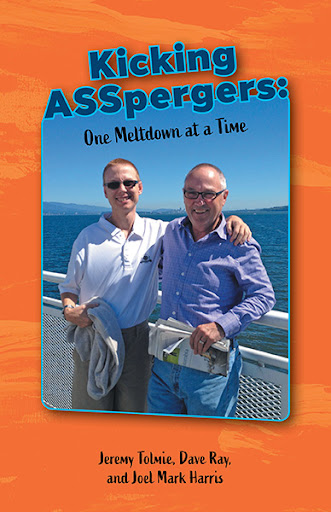
Jeremy Tolmie is a four-time published author who writes about growing up with autism. Jeremy’s most recent book, Kicking ASSpergers: One Meltdown at a Time, accounts for his life until 2021. Jeremy didn’t receive an Asperger’s diagnosis until he was 17, so growing up was tricky for him: “I’ve had a lot of struggles and obstacles like bullying in all stages of my life that I’ve had to overcome. But I am slowly getting into a good place in semi-independent living, [and] working for the library,” said Jeremy.
Jeremy, like many people on the Autism spectrum, can get overstimulated which can cause “meltdowns.” These can look different for everyone – for Jeremy, his meltdowns would cause him to freeze up and lose all his communication skills: “I stand, stare at the ground or at my hands, and can’t do anything – I become comatose.” Jeremy now has a weighted compression vest that helps to stabilize his nervous system and prevents his anxiety from getting too far out of control.
When Jeremy was younger, he says, he was incorrectly diagnosed with OCD and put on medications which interacted negatively with others he was on, causing auditory and visual hallucinations. These hallucinations caused Jeremy to act out in unpredictable and even dangerous ways, building up to an incident in which he set his family’s house on fire. “After the arson incident, I was then diagnosed with Aspergers in a second evaluation. The only reason why they did the second evaluation was that the doctors were trying to convince my parents to get me institutionalized,” said Jeremy. Jeremy went to court, and his family stuck by him through everything: “My parents hired a lawyer to fight the courts above the arson charge…I am so grateful that my family stood by me, got me through the hard times, and saw the light at the end of the tunnel.” The arson charge was eventually dropped after his family was able to provide evidence that his behaviour was caused by the combination of medications he’d been prescribed. Jeremy and his family have since moved on from that incident, but after this experience, they have difficulty trusting doctors.

Jeremy moved out of his parent’s place in 2013 into a homeshare, where he says his homeshare provider, Dave, helped Jeremy become the man he is today. “Homeshare is where you live with a family or single person where they help you get to appointments,” said Jeremy. Jeremy, unfortunately, had to move out of that and into a new homeshare situation after a sudden tragedy. Eventually, Jeremy moved into semi-independent living, which is quite different but something he’s always wanted to do. Moving into the new, more independent living space wasn’t easy: “When I first moved in, they didn’t have support workers set up yet. It took a little over a month before they had any support workers to come in and check in on me because they had just started to use these apartment buildings.” As of our conversation with Jeremy, he reports feeling settled and happy in his new home, and looking forward to continuing to write about his life.
Jeremy’s book, Kicking ASSpergers: One Meltdown at a Time, is an emotional and inspiring story of his life. It is available on Amazon in paperback and on Kindle.
Written by Katie Miller
Edited by Galen Exo
This article was featured in the latest edition of our monthly newsletter, Inclusion in Action. Subscribe today to receive regular updates with stories like this.
Want to read more? Browse our newsletter archive here


